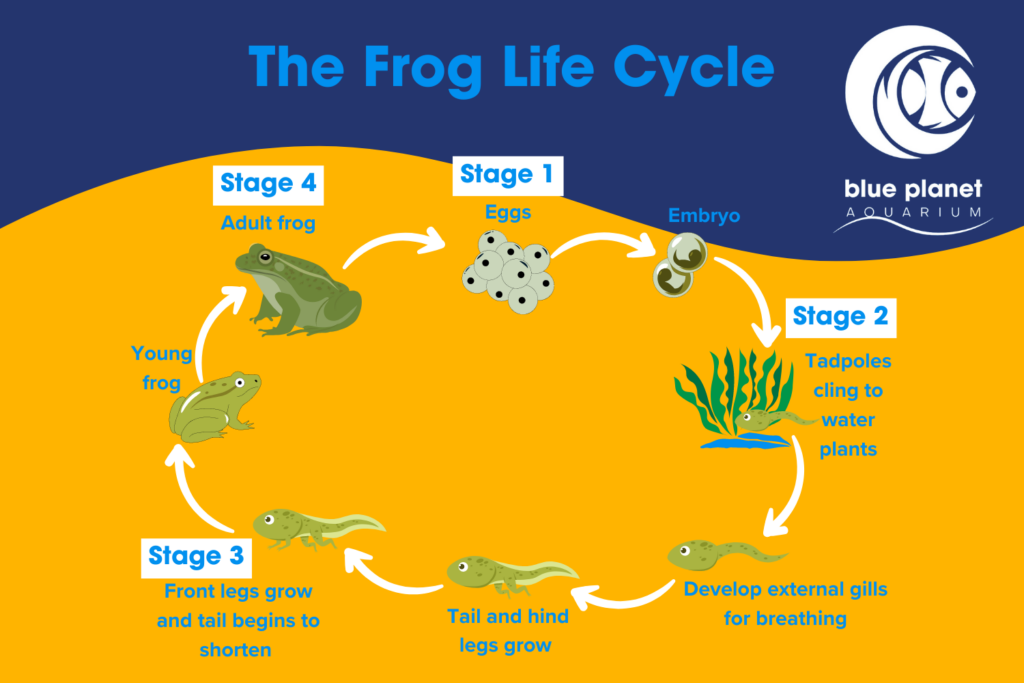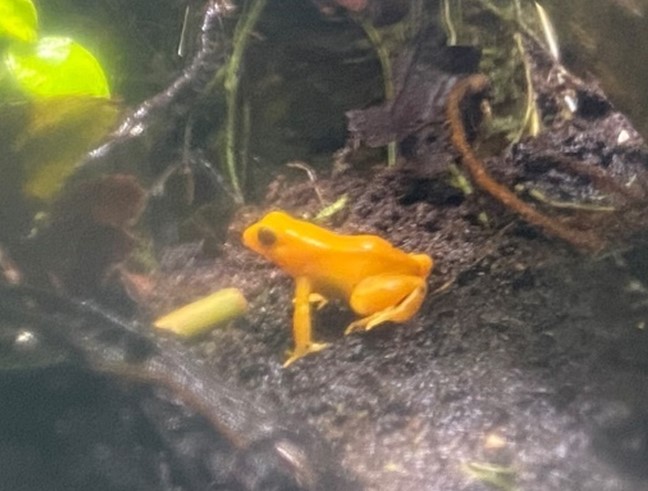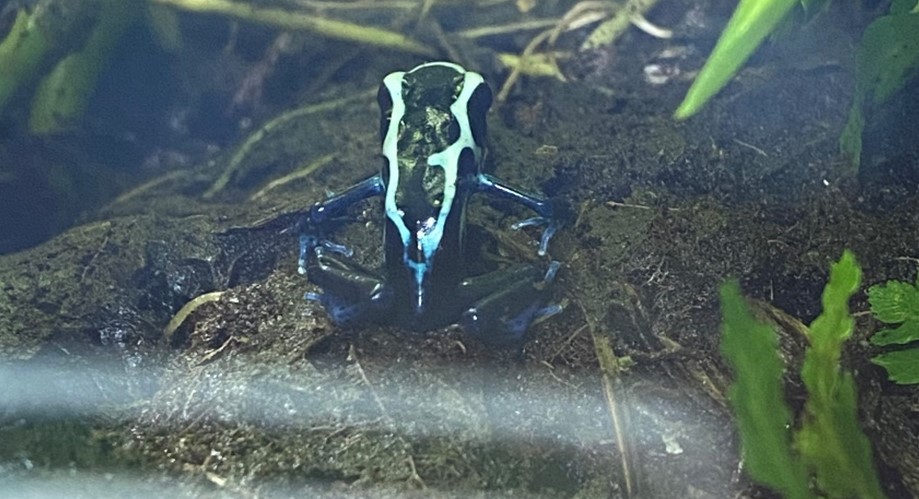The life cycle of frogs is a super interesting part of life. Over a really short amount of time, they develop from eggs to tadpoles to froglets, eventually becoming adult frogs. This exact process of metamorphosis is completely unique to amphibians, which is just one of the things that makes them so fascinating.
Because the life cycle of frogs is such an intriguing topic, we thought it would be fun to talk through the entire process from start to finish. By the end, you should be a certified frog life cycle expert!
The Four Stages of the Frog Life Cycle
Ready to take the leap into the four stages of the life cycle? Check out the image below for a quick look at the life cycle stages and what happens during each one.

Now that you have a good idea about what goes on in each stage, we thought we’d dive deeper into each one. From the physical changes they go through down to the food they eat, we’ll guide you through all the ins and outs of how frogspawn grow into adult frogs below.
Stage 1: The adult frog lays its eggs
The adult frog will lay all its eggs together in the water to start off the cycle. These eggs float around in the ponds, lakes and rivers they were laid in, and often just look like a large mass of jelly from far away.
When the eggs are clumped together, they’re collectively known as frogspawn.
Did you know? Some species of female frogs can lay up to 4,000 eggs at a time!
The frogspawn starts out as tiny black dots in a jelly-like substance. The jelly itself serves many purposes for the eggs. Not only does it keep the egg moist to help it survive, but it also offers a decent amount of protection from predators.
The jelly also serves as a good source of nutrition for the first few weeks and helps them grow.
Before hatching, their tails will begin to form within the eggs. Because of this, the tiny dot will become comma-shaped toward the end of the first stage of the frog life cycle.
If you come across a patch of frogspawn in some water, try looking closely to see how old you think they are!
Stage 2: Eggs hatch into tadpoles
When the eggs hatch, they enter the second stage of the life cycle. By this point, they’re known as tadpoles.
When they first hatch and for the first 1-3 weeks afterwards, tadpoles will stay close to the water plants and grass. Tadpoles still can’t survive on land, so they’ll usually feed on nearby plants filtered by the water, as well as graze on small bites of nearby vegetation. Luckily, tadpoles develop gills very early on, allowing them to breathe underwater and swim around in their fish-like stage.

Throughout this stage, the physical changes are much more obvious than they have been previously. Hind legs and a long tail will appear on the outside, while the lungs start developing on the inside. Frogs need lungs to be able to breathe out of the water, which they’ll be doing by the third stage. A layer of skin grows over the gills once their lungs begin working properly.
Over the next 14 weeks, the tadpole will do a whole heap of growing until it eventually becomes a froglet. Incredibly, tadpoles can control the rate of their transformation. In situations where they could be in danger from predators and/or environmental pressures, they can speed up the process to escape and move to safety. It also works the other way around – if the temperature is too cold, for example, they could delay their transformation for up to a year.
The final part of this stage is very quick, taking just 24 hours to transform completely from a tadpole into a froglet. Very impressive!
Stage 3: The young frog begins forming
At this stage, the froglet begins to resemble an adult frog much more closely. The front and back legs will have fully formed, and the tail will begin to shorten. The longer tail the frog had as a tadpole meant it could store nutrients to feed from at this critical stage.
The most exciting change at this stage of the life cycle is that the frog can now survive on land, thanks to its fully developed lungs. So, young frogs can dip in and out of the water as and when they please!

Now that they’re out on land, they start looking for food elsewhere. Their long tongues and sticky saliva are incredible for hunting bugs and insects, which now become their main source of nutrition.
Stage 4: The adult frog
It can then take another four years for froglets to mature into an adult frog. By this point, they’re much less reliant on water to survive, only needing to make sure they don’t dry out. They still like to dip in and out of ponds and rivers, though!
Of course, female adult frogs will eventually lay their own eggs and repeat the cycle. We think that’s toad-ally amazing!
Fun facts about the frog life cycle
- Unlike other frog species, poison dart frogs develop brightly coloured bodies to deter other animals from eating them.
- It’s thought that frogs have been around for over 200 million years. That would mean they were leaping around at the same time as the dinosaurs!
- Frogs don’t need to drink water because they absorb it through their skin.
- The lifespan of frogs can vary massively from just 2 years up to 10 years. However, some frogs have been known to live for longer than 20 years!
- The frog life cycle is a great example of metamorphosis, which just means that they change shape as they grow from frogspawn into adult frogs. This process is most often seen in amphibians and insects, such as butterflies.
Jumping for joy at the thought of visiting our wonderful Frog Zone? To learn more about our animals at Blue Planet Aquarium or to book tickets, visit our homepage.
